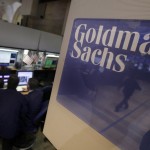Australian dollar was trading slightly higher against its US counterpart on Friday, after markets reflected the series of mixed data, that came out of the United States on Thursday.
AUD/USD reached its highest point on trading Friday at 0.9176 at 3:42 GMT, after which consolidation followed at 0.9151. Support was likely to be received at August 13th low, 0.9074, while resistance was to be encountered at July 29th high, 0.9287.
On Thursday the Department of Labor in the United States reported that initial jobless claims declined to the lowest number since October 2007, by 15 000 to 320 000 during the week ending on August 10th. The number of claims during the preceding week was revised up to 335 000 from 333 000 previously, while preliminary estimates pointed 335 000 claims.
US consumer prices rose by 0.2% in July monthly, meeting expectations, after the 0.5% rise in June. Annual consumer inflation has risen by 2% in July in line with initial estimates. Core consumer price index, which does not include volatile elements such as food and energy costs, advanced 0.2% in July on a monthly basis, as it improved by the same rate a month ago.
Additionally, it became clear that US industrial production remained flat in July in monthly terms, after the 0.2% advance in June, according to revised data.
The New York Federal Reserve reported that its Empire State index, gauging business conditions, fell to a reading of 8.24 in August from 9.46 during July. A value of 10.00 was initially expected. Values above zero usually are an indication that activity has expanded.
All these indicators raised concerns that economic recovery was probably not strong enough in order Fed to begin scaling back its Quantitative Easing.
Meanwhile, despite the current daily gains, the Aussie was poised for a weekly decline against the greenback before the Reserve Bank of Australia releases the minutes of its meeting on August 6th, scheduled next week, as speculation appeared that the central bank will give guidance on further reductions to the benchmark interest rate.
“The RBA’s been cutting rates, and the interest-rate differential has narrowed,” said Janu Chan, an economist at St. George Bank Ltd. in Sydney, cited by Bloomberg. “We expect the Aussie to fall.”
Elsewhere, the Australian currency was trading slightly higher against the kiwi dollar, as AUD/NZD cross added 0.09% to 1.1340 at 6:53 GMT. The Aussie was gaining against the euro as well, with EUR/AUD pair decreasing by 0.29% to trade at 1.4561 at 6:54 GMT.





